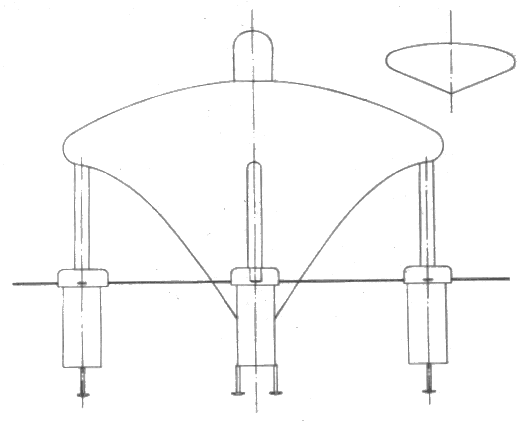|
The Spaceships of Ezekiel |
|---|
|
Appendix - Part J |
|
|
|
|
Keywords: UFO, unidentified flying objects, Bible, flying saucers, prophecy, Paleo-SETI, ancient astronauts, Erich von Däniken, Josef F. Blumrich, Zecharia Sitchin, Ezekiel, biblical prophecy, spacecraft, spaceship, NASA, Roswell, aircraft, propellant, extraterrestrial hypothesis, Jacques Vallee, interdimensional hypothesis, Project Blue Book, Condon Report, ancient history, Jesus, Judaism, Christianity, Middle East, end times, engines, rockets, helicopters, space travel, aliens, abductions, alien abductions, crop circles, extraterrestrials, astronomy, economics, biology, Venus, Mars, Jupiter, Saturn, Space Shuttle, Apollo, stars, planets, solar system, scriptures, design, fuel tank, aerodynamics, fuels, hydrogen, oxygen, wheels |
|
|
|
|
|||||||||||||||
|
|
Go to Appendix Part: A B C D E F G H I J The exchange of the weight of the helicopters and their power plants for propellant weight and volume requires a larger main tank. Fig. 16 shows that such a volume increase can be achieved more economically by an increase of the diameter than by making the "tip" longer. The elimination of the helicopters makes a shortening of the "tip" even desirable, with regard to landing properties. In vehicles of that kind we will therefore find a tendency toward a reduction of their relative height. The Langley reports (References 10, 11, 12, 13, 14) indicate such a possibility. It is quite conceivable, furthermore, that the weight advantage of the concave lower body, which becomes very small in this case, does not justify the increased cost any more, and that the lower part of the vehicle will be given a conical shape. [p.173] For the same task, a vehicle of a highly advanced technology will therefore be distinct from one of a lower technology in several important ways: It will be much smaller. Fig. 24 shows a comparison of these two extremes. A comparison of these basic features with Ezekiel's description leaves no doubt that he saw a vehicle of the lower technology; that is, a technology that is only slightly more advanced than our own today. In terms of time we can conclude that only a few decades separate us from that technology.  Figure 24 Dependence of vehicle size on development of main power plant On the basis of all these considerations we can now locate Ezekiel's spacecraft in the upper left part of the T1 curve in Fig. 23. We have no way to pinpoint that location exactly; that is insignificant, however, in the context of our search for general order of magnitude. The selection of the point is therefore left to our own judgment, and we locate it at the intersection of T1 with W0 = 100,000 kg (220,000 lbs). From that we obtain the other main data of the spaceships:
The spaceship of Figs. 1 and 4 corresponds to these dimensions. [p.174]
|
|
| |
www.SpaceshipsOfEzekiel.com